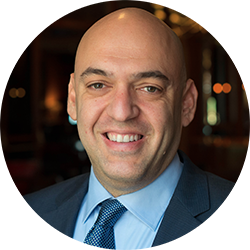There is a lot written about federal sentencing and safety valves. What follows is a very brief overview of the federal safety valve available to those charged with certain drug offenses.
I’m facing a mandatory minimum sentence, but I’m trying to figure out if I’m eligible for the “safety valve.” What is the safety valve?
The safety valve is one of the ways you can get sentenced to less than the mandatory minimum. The law for the safety valve is codified under 18 USC § 3553(f). To qualify for the safety valve you need to meet
- You are with a charged a narcotics offense under of 21 U.S.C. §§ 841, 844, 846, 960, and/or 963
- You have no more than one actual criminal history point. In other words, if the court agrees to “look the other way” in an attempt to get you down to one criminal history point, that won’t work. It needs to be no more than one actual criminal history point.
- No violence or weapon used in the offense.
- Nobody was killed or seriously injured as the result of the offense.
- The Government is not alleging a “major role” under the USSG nor is the offense part of a “continuing criminal enterprise” (don’t worry if you’re charged with conspiracy under 21 U.S.C. § 841, that’s not the same as “continuing criminal enterprise” which is charged under 21 U.S.C. § 848.
- You agree to give the Government a “full and truthful disclosure” about everything relating to your involvement in the offense. This usually means signing a limited immunity agreement. Sitting down your lawyer, the prosecutors, and the case agents, and telling them everything about your involvement in the case. It does not matter if your cooperation is helpful or even substantial.
I have some little misdemeanor cases, does that mean I’m going to be above one criminal history point and not eligible for safety valve?
It depends. Under USSG § 4A1.2(c), the following offenses do not count towards your criminal history unless you were sentenced to more than one year probation or served more than 30 days in jail:
- Reckless driving or careless driving
- Contempt of court
- Disorderly conduct
- Driving on a suspended license
- Giving false information, obstructing a police officer or resisting arrest
- Bad check
- Leaving the scene of a accident without giving information (“hit-and-run”)
- Prostitution
- Resisting arrest
- Trespassing
- Failure to pay child support
And the following offenses never count towards your criminal history, no matter what your sentence is:
- Juvenile “status offenses” like truancy or curfew violations
- Violations of local ordinances (municipal code violations) unless the offenses are also crimes under state law
- Drunk in public
- Vagrancy
If I am eligible for safety valve, how far below the mandatory minimum will I get?
That depends on many factors. It depends on the type of plea agreement your attorney makes with the government, the range in the sentencing guidelines, mitigating factors presented by your attorney at sentencing, and of course, the particular judge presiding over your case.
But what about that Booker Supreme Court case that everyone talks about? I thought that made the sentencing guidelines advisory?
Yes, that’s right. United States v. Booker 543 U.S 220 (2005), made the United States Sentencing Guidelines advisory. That means the guidelines are now only one of several factors the judge must consider consider at sentencing. Unfortunately, Booker did nothing to alter the laws regarding mandatory minimums. The mandatory minimums are still in place, which is why safety valve is so important if you’re facing a mandatory minimum sentence.
Speak to a California lawyer today if you are facing criminal charges. This is all very general information about safety valve sentencing. If you want to talk further about your particular case, feel free to contact me at (323) 633-3423 or send a message via the secure contact form on this page to schedule a confidential consultation.

